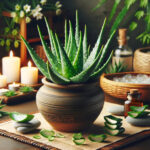Introduction to Aloe Albiflora
Welcome to the vibrant world of Aloe albiflora, a gem amongst the vast collection of succulents! Known for its compact form and striking white flowers, Aloe albiflora stands out as a charmer in the aloe family. Let’s delve into the peculiarities of this rare specimen and discover why it’s coveted by plant enthusiasts and ornamental gardeners alike.
Originating from the sun-baked soils of Madagascar, Aloe albiflora has adapted to thrive in harsh conditions with grace. Unlike its well-known cousin, the Aloe vera, this species revels in its exclusivity, making appearances only in particular locales and select greenhouses. Its rarity adds a layer of allure and fascination for those lucky enough to behold its beauty.
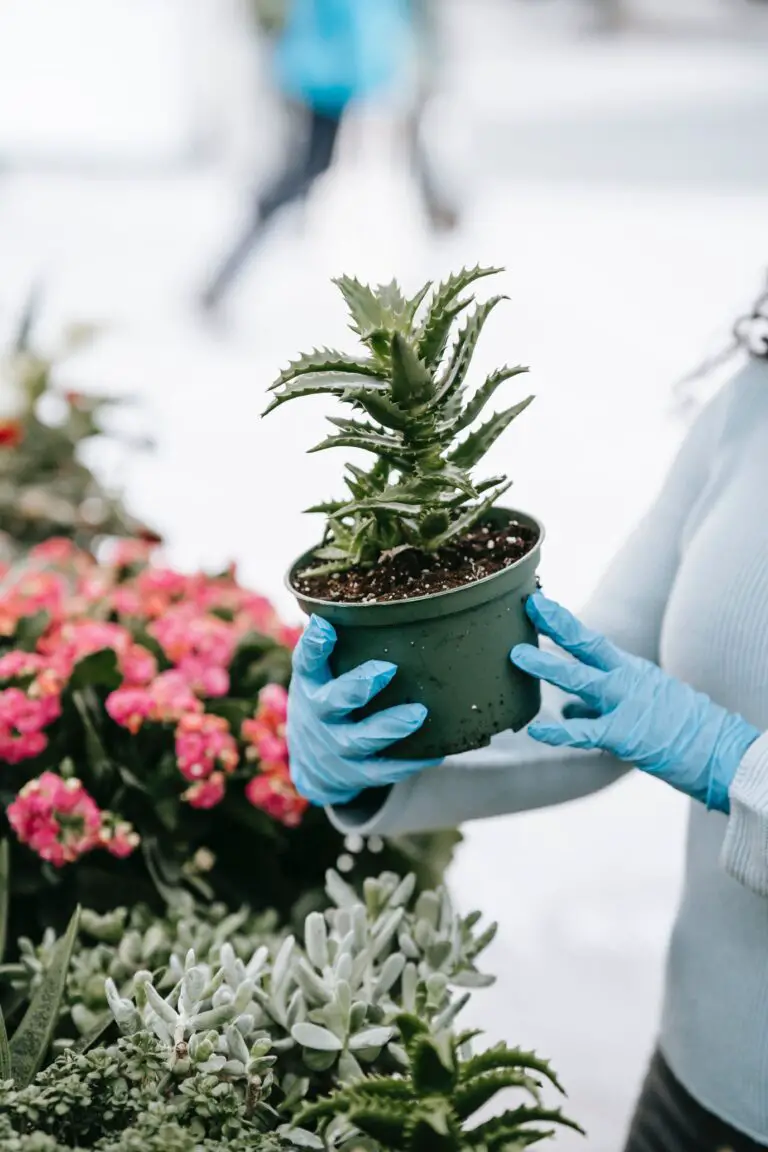
Each Aloe albiflora is a natural piece of art, presenting a rosette of fleshy, lance-shaped leaves that demand attention. Their pearly glow under the sunlight is enough to captivate any onlooker. But it’s not just about aesthetics; these plants are stalwarts of resilience, storing water in their leaves to withstand dry spells—a testament to their survival savvy.
When the blooming season arrives, Aloe albiflora doesn’t shy away from showing off. It produces exotic, bell-shaped flowers that seem to sparkle against the greenery—white baubles that echo the purity and simplicity of nature itself. Discover more about the care of Aloe albiflora, and you might just find yourself enchanted by its understated elegance and evergreen charm.
Indeed, the decorative appeal of this succulent is undeniable, making it a sought-after species for interior and landscape design. Whether tucked in a quaint pot on a sunny windowsill or nestled among stones in a garden bed, Aloe albiflora adds a touch of the extraordinary to everyday spaces.
Botanical Profile of Aloe Albiflora
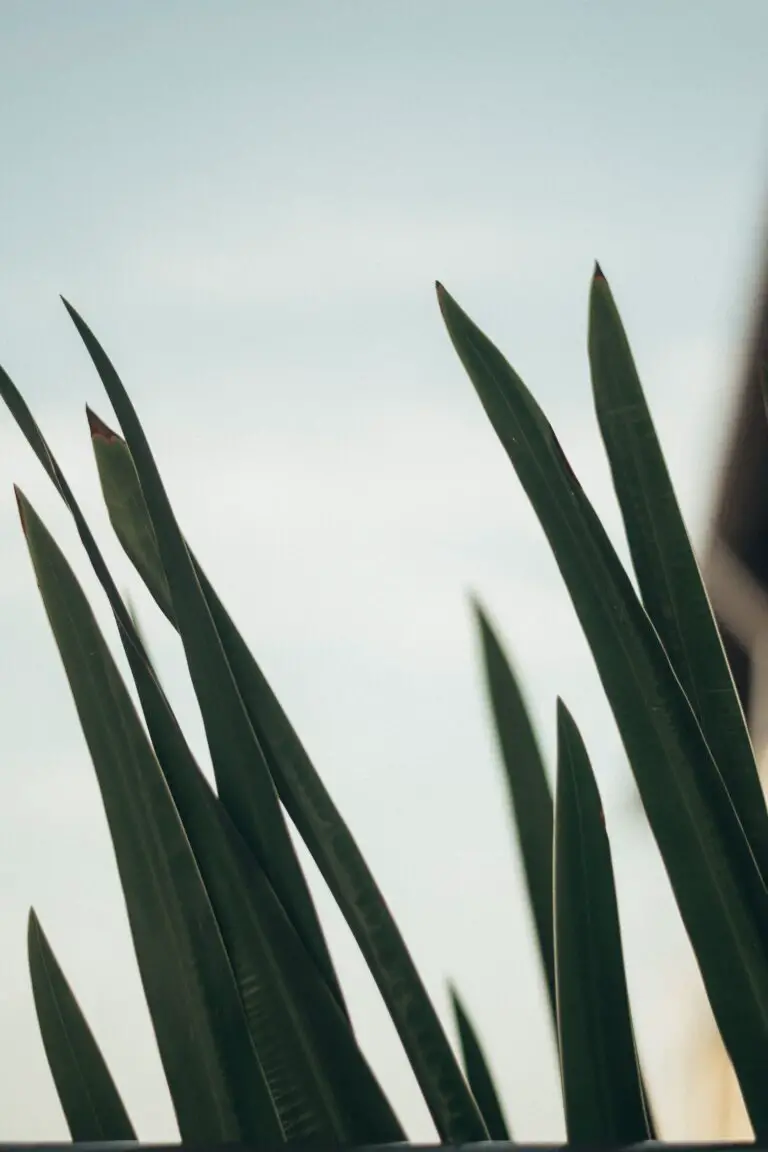
Step into the green world of succulents, and you’re sure to catch a glimpse of the alluring Aloe albiflora. This pearly gem of nature might just look like another plant in the succulent family, but trust me, it packs its own punch! Let’s delve into what makes Aloe albiflora stand out in the botanical lineup.
Scientific Classification Breakdown
The botanical world loves its organization, and Aloe albiflora is no exception to the rule. It proudly lays its roots in the Asphodelaceae family. This is a clan known for members that thrive in arid conditions – think sun, sand, and minimal water.
Description: A Tapestry of Greens and Whites
On first glance, you might notice the fleshy, green leaves of Aloe albiflora huddled in a rosette formation. They’re sword-shaped—think of a valiant knight from medieval times, but in plant form. Unlike other aloes, though, the leaves are edged with delicate white teeth, giving it a unique visual edge. There’s something almost sophisticated about it, wouldn’t you agree?
The Average Size: Petite But Mighty
Don’t be fooled by its stature; Aloe albiflora typically stays on the petite side, often not surpassing the heights of the average paperback book. But what it lacks in size, it makes up for in character. It’s a plant that can fit almost anywhere, from a cozy windowsill to a sprawling desert garden.
Dazzling White Blooms
Now, let’s chat about the blooms. Oh, the blooms! The most unique trait of Aloe albiflora is the dazzling white flowers it adorns, which effloresce atop tall, slender stalks. Reminiscent of pearls sprinkled over green velvet, they capture the light in the most enchanting way when they decide to make an appearance—usually around winter to spring, giving all the garden enthusiasts something to look forward to as the cooler days linger.
The allure of Aloe albiflora is undeniable. With its petite form and stunning white blooms, it’s a succulent that doesn’t just blend into the background. Instead, it tells a story of resilience and unexpected beauty, much like the tiny wonders often overlooked in our bustling lives. So the next time you encounter this plant, take a moment to appreciate its subtle complexities—it’s more than just a pretty face, it’s a marvel of nature’s artistry.
Natural Habitat and Distribution
Imagine a landscape where the air is arid, the soil is gritty, and the sun beats down with an unwavering gaze. This is where Aloe albiflora, a true embodiment of resilience, proudly exists. Within the rugged terrains of Madagascar, this succulent marvel has claimed its throne amid the rocky outcrops and sparse vegetation. This isn’t your backyard garden variety; it’s a living jewel, thriving where few dare to root.
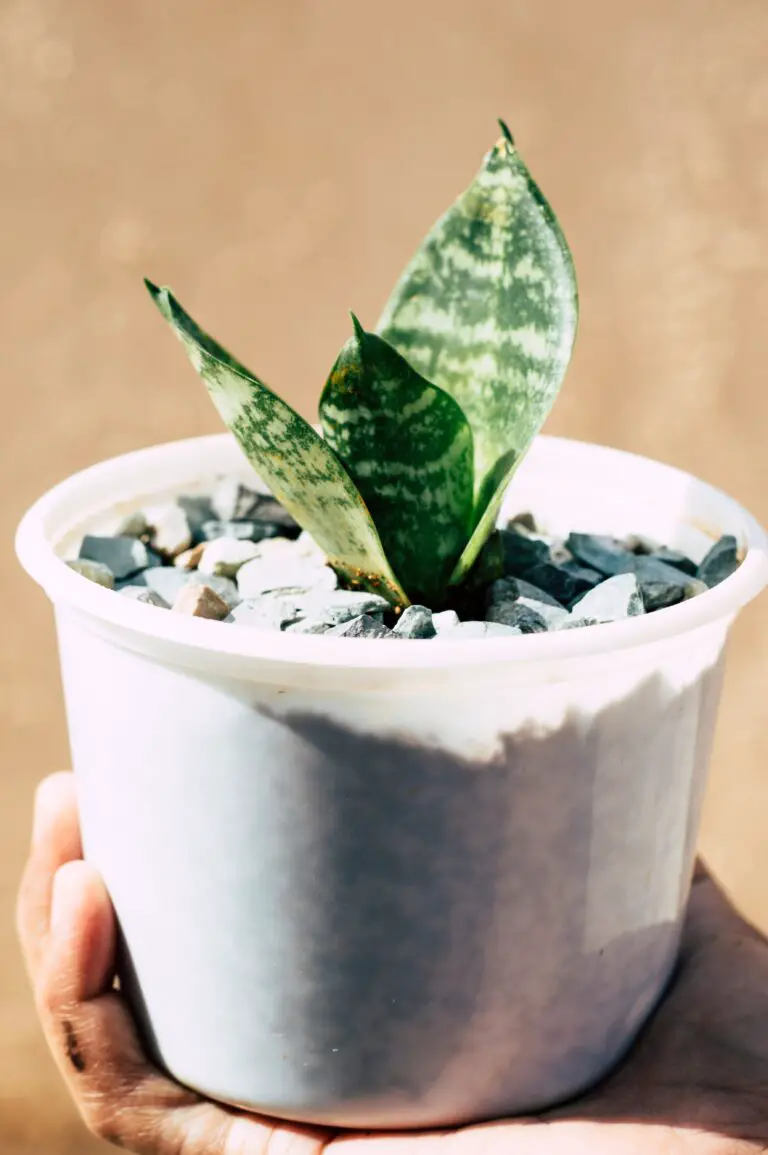
The geographical distribution of Aloe albiflora is a tale of isolation and specificity. Anchored to Madagascar’s unique environment, it revels in the island’s microclimates, reflecting a long history of adaptation and survival. But don’t pack your bags just yet; the distribution of this pearly succulent is a game of hide and seek as they are not found on every corner.
Climatically, Aloe albiflora has a preference for the warm caress of a semi-arid climate where the rainy and dry seasons dictate the rhythm of life. During the wet season, its roots drink in the moisture, storing it for the parched months ahead. It’s a masterclass in resource management, teaching us the art of survival in the most unforgiving of conditions.
These succulents are not just plants; they are storytellers of an ancient land, each leaf a page narrating the history of Madagascar’s diverse ecosystem. They remind us that to understand nature’s pearly secrets, we must listen to the tales whispered by the winds that dance across their spiky defenses.
Cultivation Tips and Tricks for Aloe Albiflora
So, you’ve set your eyes on the charming Aloe albiflora, the nature’s one-of-a-kind pearly succulent that’s stealing the spotlight in gardens and homes alike! Let’s turn that green thumb of yours into a success story with some easy-to-follow guidelines that will ensure your Aloe albiflora not only survives but thrives in its new home.
Soil: The Foundation of Growth
Let’s kick things off with soil, the bedrock of your Aloe albiflora’s well-being. This succulent is pretty low-maintenance, but it demands well-draining soil that prevents water from overstaying its welcome. Imagine you’re making your bed but for a plant—you want it cozy, yet breathable. Go for a cactus or succulent mix and consider adding a bit of sand or perlite to really get that drainage on point.
Water: A Balancing Act
When it comes to watering, it’s all about rhythm and balance. Too much love in the form of water, and you’ll leave your plant’s roots swimming for a lifeguard. Too little, and you might find it withering away. The secret is to water deeply but infrequently, allowing the soil to completely dry out between drinks. Think of it like this: you’re the DJ of moisture, and your Aloe albiflora is dancing to the beat of the ‘dry-to-the-touch’ base line.
Sunlight: Basking in the Right Amount
Now, let’s chat sunshine. Aloe albiflora loves the limelight, seeking a bright spot where it can soak up some good old indirect sunlight. A south or west-facing window ledge could be its own personal stage, but be cautious of harsh midday rays that might cause a performance burnout. Give it that gentle morning or late afternoon show where it can truly glow without the risk of a sunburn.
Temperature: Keeping it Comfy
Last but not least is temperature. Your Aloe albiflora is not a fan of the cold shoulder. Keep it in a place where the thermostat reads cozy room temperatures between 60 to 75°F (16 to 24°C). You wouldn’t go camping in a blizzard without a tent, would you? Similarly, shield your Aloe albiflora from drafts and cold snaps, ensuring a warm and stable environment where it can put down roots and flourish.
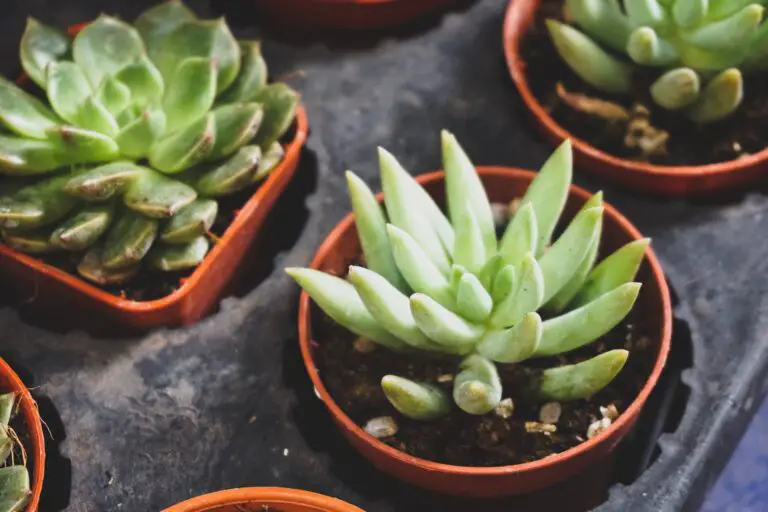
Armed with these cultivation tips and tricks, you’re well on your way to becoming a proud parent of a healthy, beaming Aloe albiflora. Remember, this isn’t just plant care; it’s the creation of a mini ecosystem where every element plays a vital role. So, roll up those sleeves and get planting—your pearly succulent is ready to grow with you!
Propagation Methods of Aloe Albiflora
If you’ve ever marveled at the delicate beauty of Aloe albiflora, you might be itching to know how to multiply this pearly succulent. Fear not, green-thumb enthusiast; the mysteries of propagating your own little tribe of Aloe albiflora are about to be unveiled!
Bringing Life through Offsets
Just like a young bird learns to fly from its nest, Aloe albiflora starts its journey as an offset – a mini-me that sprouts from the base of the mother plant. When you notice these little pups, it’s a sign of a happy, healthy plant. Give them time to harden off, this typically takes a few weeks. Once they’re big enough and have a few roots of their own, they’re ready to be gently separated and planted in their own pots to start a new life. Remember, procrastination is the thief of time and offsets!
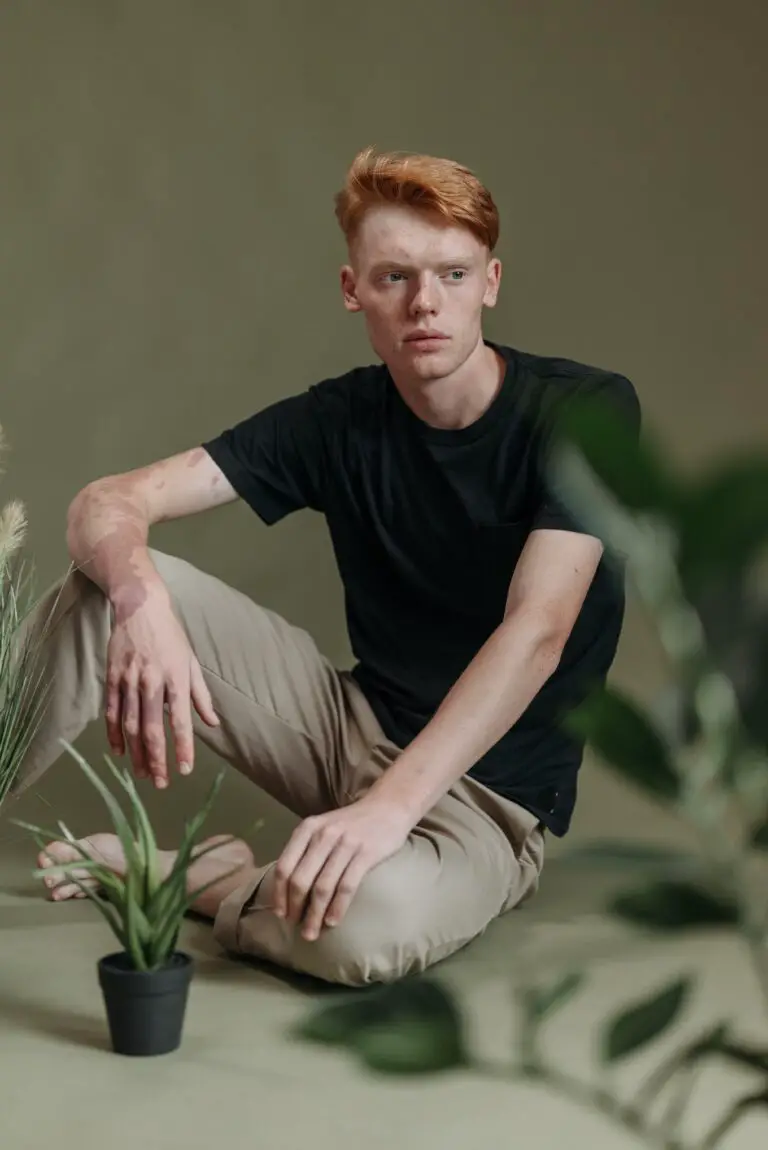
Seed Germination: The Slow and Steady Race
Growing Aloe albiflora from seeds is a tale of patience. After pollination, our Aloe albiflora produces seeds that can be harvested and sown. Though germination may seem like testing your patience and could take several weeks or even months, the reward is a new generation of plants, genetically diverse and robust. Make sure the soil is well-draining and put on your waiting cap, because nature can’t be rushed.
Cuttings: A Cut Above
Sometimes, Aloe albiflora will bless you with a mature leaf that can be used for propagation. This process, known as taking cuttings, involves slicing off a healthy leaf, allowing it to callous over to prevent rot, and then planting it in suitable soil to encourage root growth. Think of it as a plant’s version of a magic trick – one minute you have a leaf, and the next, a new plant is emerging.
Nurturing Aloe albiflora into new plants may seem like alchemy, but with offsets, seeds, or cuttings, you’ve got all you need for your very own succulent sorcery. So, go on, don your gardening gloves and start your own propagation adventure with Aloe albiflora!
Care and Maintenance
When it comes to nurturing your Aloe albiflora, think of yourself as its personal wellness coach. These pearly beauties need a bit of guidance to flourish, and with the right playbook, they’ll thrive. So, let’s dive into the essentials for keeping your Aloe albiflora in tip-top shape. Imagine your Aloe as the athlete of the plant world – it needs a steady regimen to perform at its best!
Fertilization: The Nutrient Boost
Feeding your Aloe albiflora is akin to a runner carbo-loading before a race. These succulents benefit from occasional fertilization, especially during the growing season. A balanced, half-strength succulent fertilizer every month will do wonders. Picture this: Just like a well-balanced diet keeps us energized, a smidge of fertilizer keeps Aloe albiflora’s leaves lush and pearly.
Pruning: Keeping in Shape
Pruning isn’t just for the aesthetic – it’s a health check for your Aloe. Snip away any dried or wilted leaves at the base, and you’ll not only tidy up the appearance but also encourage new growth. It’s like giving your Aloe a haircut to let its inner strength shine through.
Pest Control: The Defense Play
No one wants uninvited guests, and your Aloe albiflora isn’t an exception. Mealybugs and spider mites could sneak in, so stay vigilant! A gentle wipe with soapy water or a neem oil solution can act as your plant’s personal pest bouncer, showing these critters the door before they crash the pearly party.
Aloe albiflora is no delicate flower; it’s a resilient gem that, with the right care, can be the crowning jewel of your plant collection. Regular check-ins, a balanced diet, and good hygiene will set the stage for a robust and stunning succulent.
Want to deepen your green-thumbed expertise? Dive into a world of succulent care tips and tricks at World of Succulents. It’s an oasis of knowledge for succulent lovers seeking to perfect their craft.

Health Benefits and Uses of Aloe Albiflora
Step into the world of Aloe albiflora, a succulent that’s not only a visual pleasure with its pearly white flowers but also a treasure trove of health benefits. Known for its soothing and medicinal properties, Aloe albiflora is more than just another pretty plant. It’s a silent healer with roots deep in cultural heritage.
Medicinal Marvels: Aloe Albiflora in Action
Imagine you’ve spent a little too long under the tropical sun, and you’re feeling the sting of a sunburn. You reach for the gel of Aloe albiflora, and instantly, its cooling properties start to work their magic, giving you relief from the discomfort. This isn’t marketers’ hype—this succulent is packed with compounds that reduce inflammation and pain, making it a go-to for minor burns and skin irritations.
But its prowess isn’t limited to skin deep. The gel from this plant has been consumed to support digestive health, much like its famous cousin, Aloe vera. From soothing the lining of the stomach to aiding in digestion, Aloe albiflora has been a subtle yet significant player in traditional medicine.
Cultural Significance: A Green Heritage
In the nooks of cultural practices, Aloe albiflora has found its place too. Some communities regard it as a symbol of protection, placing it at doorways to ward off negative energies. Talk about green guardians at your threshold! Others use it during important rituals, attributing to it a sacred status, much like the ancient Egyptians did with Aloe varieties.
What’s more uplifting than knowing that a plant sitting in your windowsill could have centuries of stories and traditional beliefs rooted within its fibrous leaves? Aloe albiflora is not just surviving; it’s thriving with a lineage of cultural richness.
We’ve harnessed the knowledge of this plant’s benefits, eternalized through generations, and continue to find innovative ways to integrate it into our modern lives. Whether it’s in beauty products for that age-defying glow or as a natural remedy in our home first aid kits, Aloe albiflora stands firm in its relevance through time.
To gain a deeper understanding of the versatility and benefits of Aloe albiflora, take a moment to watch this informative video:
As researchers continue to delve into the potential of Aloe albiflora, we may be on the brink of discovering even more ways this succulent can contribute to our well-being. Its legacy as a natural healer is far from over; in fact, it’s just getting started.
Potential Challenges
Uncovering the mysteries of Aloe albiflora is akin to nurturing a gem – fascinating yet delicate. Like any botanical treasure, it faces its share of adversities that can tarnish its pearly luster. Let’s explore the trials this succulent may encounter in its journey towards full bloom.
One might not envisage a plant as hardy as Aloe albiflora grappling with ailments, yet they aren’t immune to the plant-equivalent of a common cold. Fungal diseases like root rot, often spurred by waterlogged soil, can be the bane of its existence. The telltale signs? A base that’s softer than an overripe peach and leaves that echo the melancholy of wilt.
Then there are the persistent pests, the uninvited guests at the green soiree. Scale insects and mealybugs, those sneaky freeloaders, might just set up camp beneath the leaves, siphoning the vitality out of this desert beauty. The result: a once vibrant plant, now as patchy as a leopard’s coat.
Finally, the silent peril – environmental stressors. Too much sunlight can cause leaves to blush a shade too many, resembling a sunburnt tourist rather than a sun-loving succulent. Alternatively, chillier drafts can trigger a stress response, leaving the aloe’s usually perky leaves hanging as limp as overcooked spaghetti.
Does all this mean that growing Aloe albiflora is a recipe for horticultural heartbreak? Certainly not. With a bit of insight and preemptive care, these common problems can be navigated with the grace of a seasoned gardener, ensuring that your Aloe albiflora thrives, adding a stroke of nature’s splendor to your surroundings.
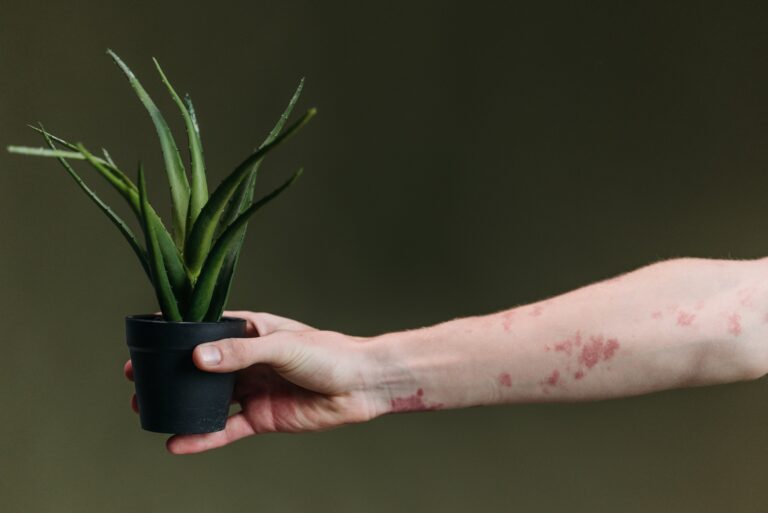
Integrating Aloe Albiflora into Your Garden
Picture a corner of tranquility in your garden, a dedicated spot where the striking Aloe albiflora takes center stage among soft mounds of greenery. Not just a feast for the eyes, Aloe albiflora, also known as nature’s pearly succulent, adds a touch of the exotic, its elongated leaves speckled with white that shimmer like pearls in the sunshine.
Harmonize Aloe albiflora with complementary companions such as swaying ornamental grasses or clusters of lavender. The contrast between the smooth succulent leaves and the feathery grasses creates a dance of textures, while lavender soothes with its calming scent and pollinators buzz joyfully around. Moreover, this succulent doesn’t just amplify the beauty of your outdoor oasis; its medicinal properties have been acclaimed for soothing minor burns and skin irritations, weaving wellness into the botanical tapestry of your space.
To integrate Aloe albiflora in indoor environments, consider a modern minimalist approach. A sleek, white ceramic pot housing this succulent can stand as a living sculpture on a coffee table or office desk. The Aloe albiflora not only purifies the air but also serves as a green reminder of the natural world outside the urban jungle. It thrives on neglect, so a sunbathed windowsill and occasional watering are all it asks for.
Don’t restrict your imagination to the horizontal plane of your gardening beds. Vertical gardens are a tapestry of life that Aloe albiflora can undoubtedly adorn. Picture a wall of verdant foliage with the gleaming leaves of Aloe albiflora peeking out, a living artwork that’s ever-evolving and perennially beautiful. Professionals have demonstrated how using vertical space effectively multiplies the green footprint of your area, without requiring additional square footage on the ground.
Whether your garden whispers the peaceful narrative of a Zen paradise or sings the vibrant tune of a tropical haven, Aloe albiflora plays its part to perfection. Imagine this succulent nestled among smooth river rocks and gentle moss in a Japanese-inspired space, or basking in full glory next to bold, brightly colored blooms in a Caribbean-themed plot. The green pearly leaves will certainly steal the spotlight wherever they are placed.

To conclude, Aloe albiflora isn’t just another plant; it’s a versatile gem that augments the aesthetic and healthful attributes of any garden or indoor space. By marrying its unique charm with creative garden designs and thoughtful indoor placement, Aloe albiflora stands not just as a plant, but as a statement of living art that enchants and heals.
Frequently Asked Questions about Aloe Albiflora
Are you eager to discover the lowdown on Aloe albiflora, the ‘Pearly Polka-Dot’ of the succulent world? Let’s dig into the sandy soil of wisdom and unearth answers to the most common queries buzzing around this charming plant!
How Do I Keep My Aloe Albiflora Thriving?
The secret to a happy Aloe albiflora lies in the magic of balance. Imagine you’re on a serene beach, basking in morning sunshine – that’s the kind of sun your Aloe craves! Give it a playful combination of early light and shelter from the intense afternoon rays. Pair this with well-draining soil, and you’ll witness it sprawl lush and content in its pot.
Mastering the Art of Aloe Albiflora Reproduction
It might not swipe right on dating apps, but Aloe albiflora knows the courtship dance of plant reproduction. With a flirtatious display of blooms, it lures in the bees like a botanical barista crafting nectar-laden delights. Offspring, or ‘pups’, will soon spring up around the mother plant. Gently tease these apart and pot them, and voilà – you’re now a grandparent to baby Aloes!
Seasonal Sways: Aloe Albiflora’s Yearly Rhythms
Witnessing your Aloe albiflora transition through seasons is like watching a captivating slow dance. When winter’s cool fingers brush against it, the Aloe nestles in, slowing its growth and drinking in water sparingly. As the warmth of spring unfurls, so does your Aloe – stretching out with renewed vigor. Prepare a seasonal feast of light watering to match its awakening appetite.
Unraveling the Knots: Addressing Aloe Albiflora Woes
Even the most pampered Aloe albiflora can sometimes sport sullen, droopy leaves or a not-so-pleased pallor. Don’t fret! These are mere whispers for help. Overwatering is often the culprit, leading to a squishy, unhappy plant. Cut back on the water, ensure proper drainage, and allow the soil to dry out between watering sessions to restore its cheerful self.
Seeking more succulent wisdom or a specific Aloe albiflora tip? Consult the biomes of the internet or local green-thumbed gurus. Remember, every Aloe albiflora has its own personality – get to know yours and witness a verdant partnership bloom.

